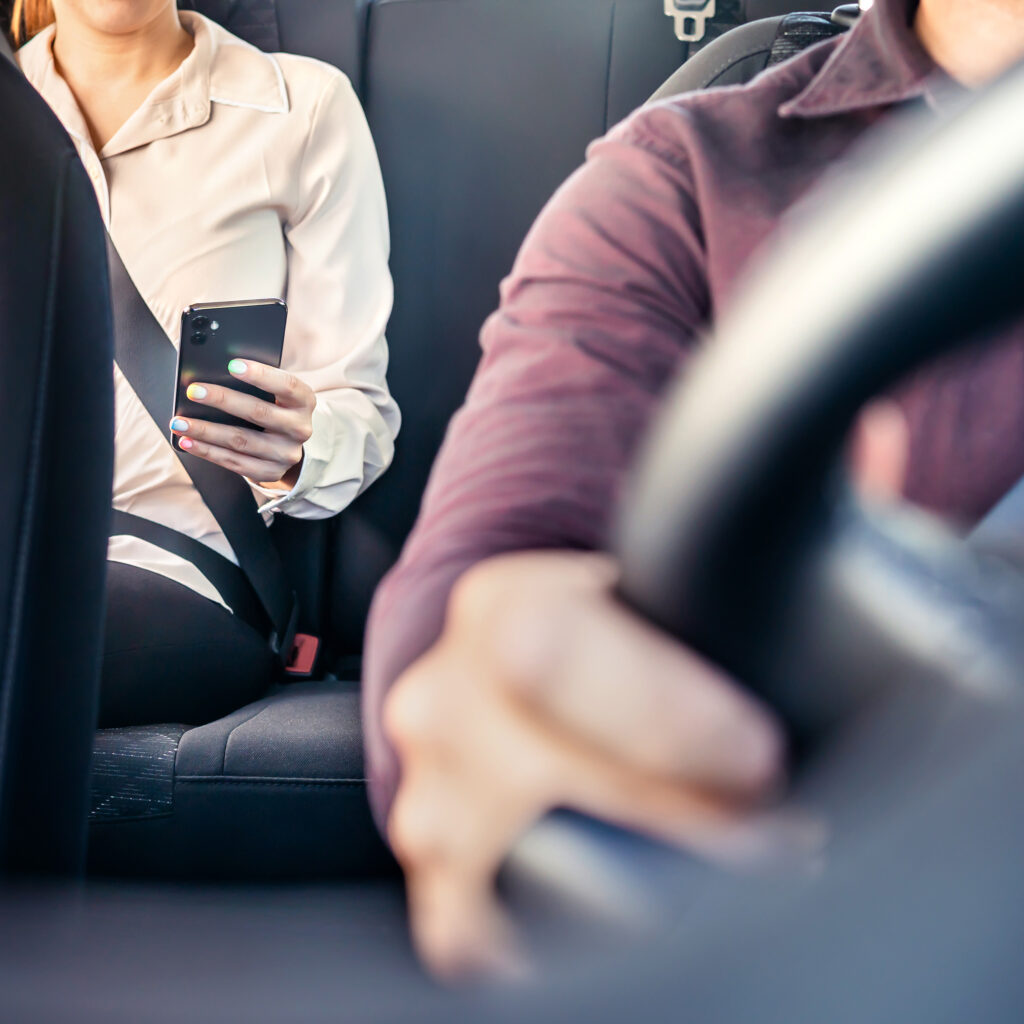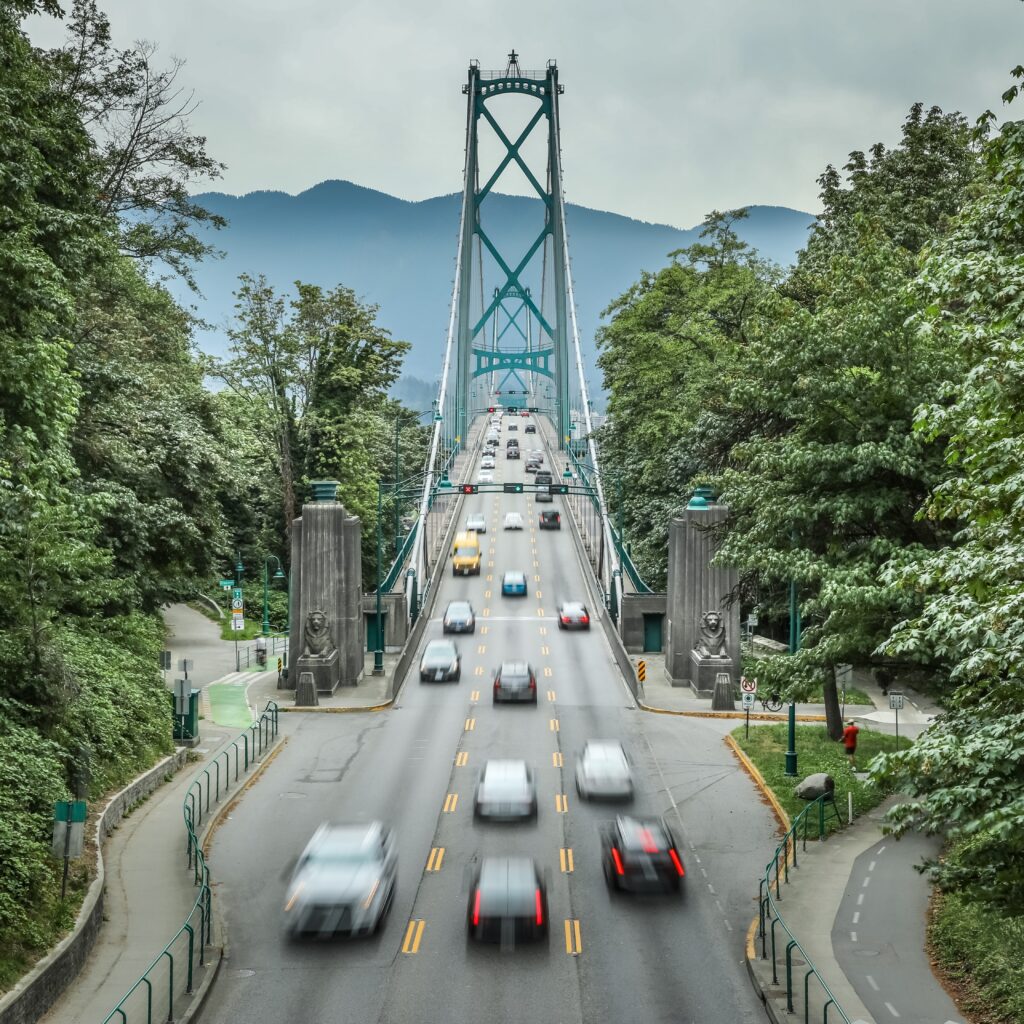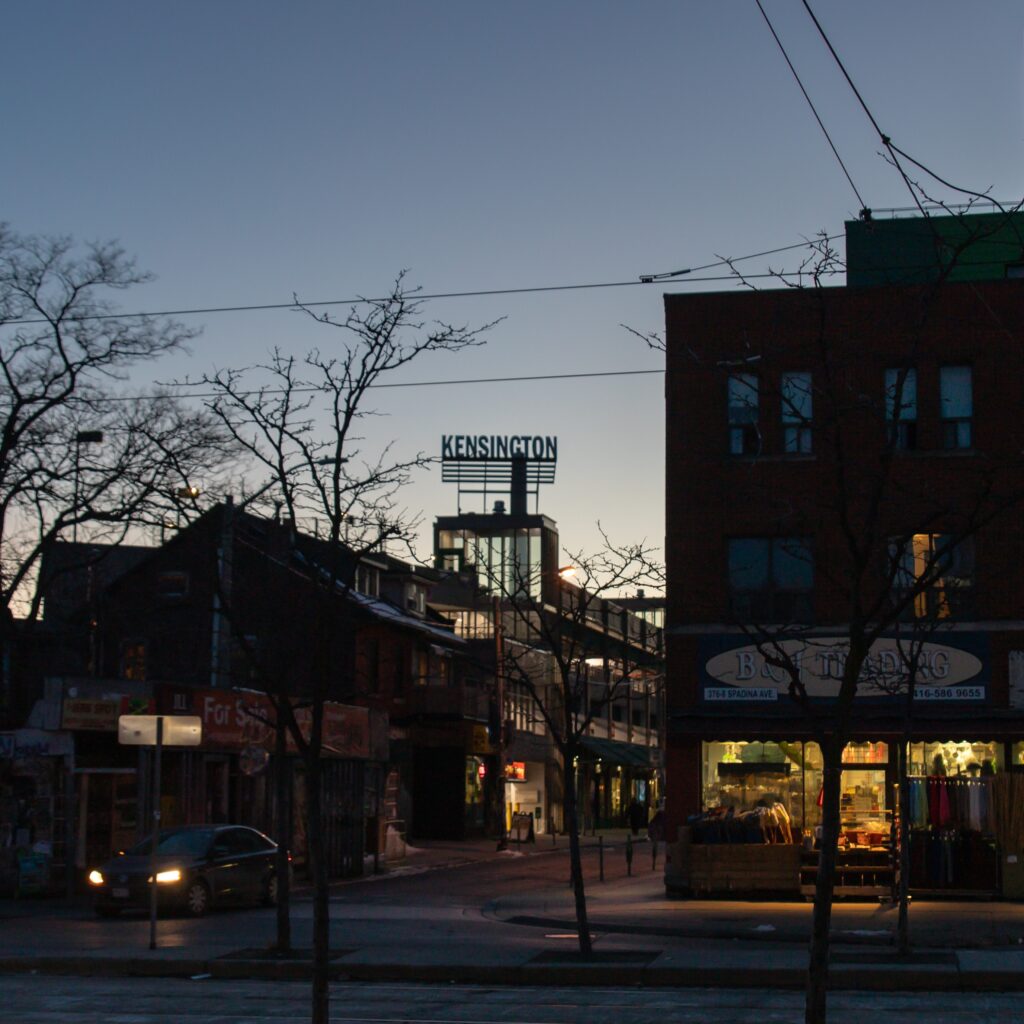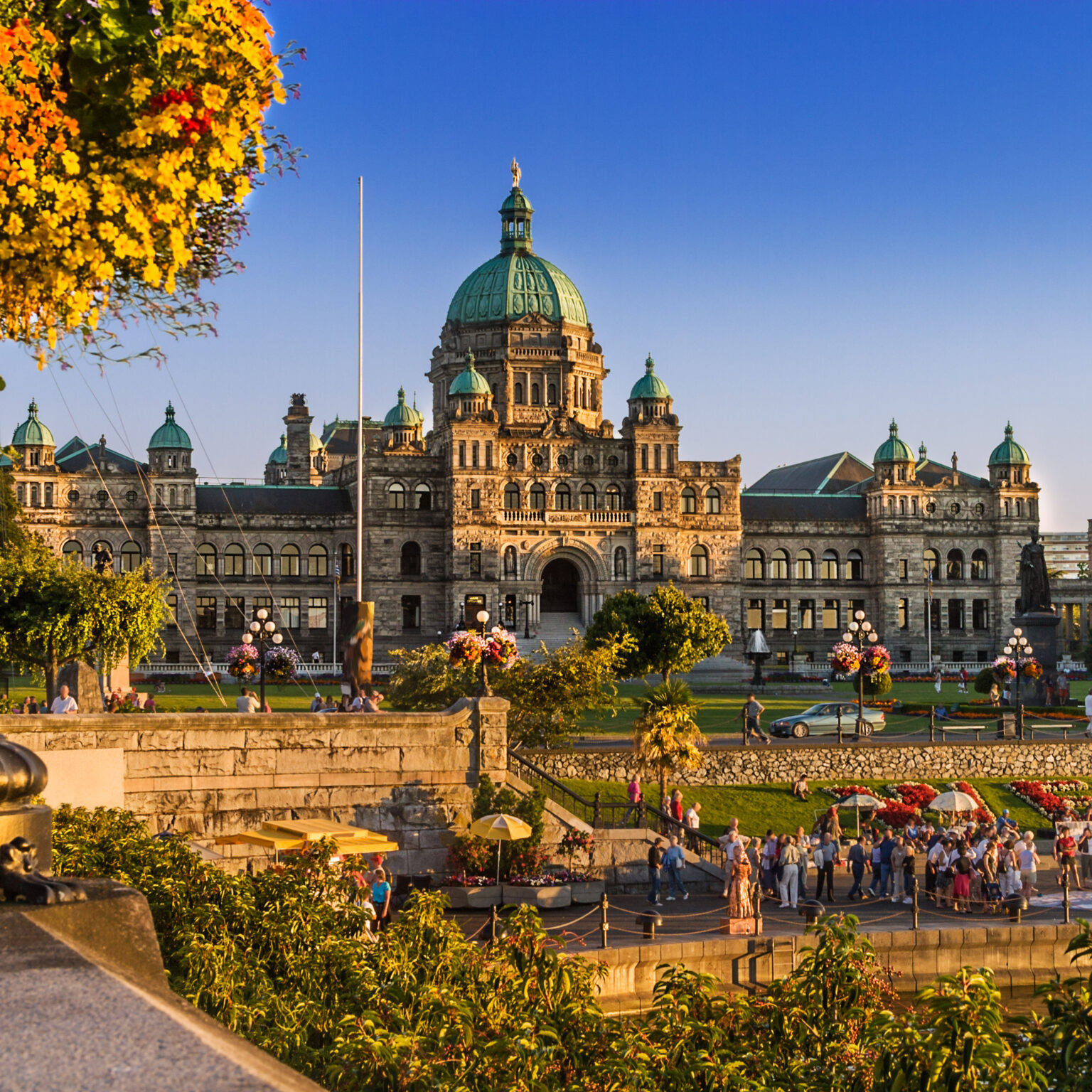
Uber’s Impact
in Canada
2024

Key Facts
Since launching in Canada in 2012, Uber has helped transform the Canadian economy, accelerating mobility and catalyzing growth. Canadians benefit from convenient, safe and affordable transportation and delivery services. At the same time, Uber and Uber Eats offer drivers and delivery people flexible earning opportunities, while also boosting revenue streams for local businesses.
We estimate that in 2024, Uber generated $13.6 billion in Gross Value Added (GVA) for the Canadian economy. This includes the direct value generated by drivers, delivery people, and merchants, the upstream supply chain activity that this supports, the induced spending from household income, and economic activity stimulated by the improved connectivity that the Uber app provides.
Making Daily Life Easier
Uber offers Canadians the ability to go anywhere or get anything at the touch of a button. Increasingly, more communities are benefiting from Uber’s convenient and reliable services.
In 2024, 1 in 2 Uber riders used the Uber app to get to or from a doctor’s or hospital appointment, and 42% used it to get somewhere in an emergency.
We estimate that in 2024 the Uber and Uber Eats apps saved Canadians a total of 70.3 million hours, through a combination of travel time savings provided by ride-sharing services, as well as through the reduced number of trips to restaurants and hours spent cooking.
Every day, we estimate that Uber Eats is used to order food or groceries for more than 14,000 birthday parties, 16,000 date nights, and 50,000 family meals.
Providing Merchants With Tools For Growth
Canadian merchants of all sizes are using Uber Eats to expand their reach and grow revenue, even in the face of challenging operating environments.
In 2024, we estimate that the Uber Eats app supported $1.61 billion in additional revenue for merchants in Canada that would not have been earned without Uber Eats or other food delivery apps.
of SME merchants expect their revenue from Uber Eats to stay the same or increase in the next year.
On average, SME merchants estimate that 1 in 5 of all their orders now come from Uber Eats.
of Uber Eats users say that the Uber Eats app helped them discover new restaurants, while 70% of SME merchants report the app helped them reach new customers they wouldn’t have been able to reach otherwise.
Connecting Canadians to Local Businesses
By connecting residents and visitors to local businesses, Uber ridesharing brings consumer spending power to Canadian businesses at all times of the day and night. Uber gives Canadians the confidence to stay out later. We estimate this adds $1.17 billion of economic value to the Canadian economy, including supply chain impacts and induced effects.
of Uber riders used the Uber app to visit a restaurant or bar.
of riders say that safety is an important reason why they choose to ride with Uber.
agree that having options like Uber helps to reduce drunk driving in their area.
Creating Flexible Earning Opportunities for Drivers & Delivery People
Uber and Uber Eats have together offered hundreds of thousands of people living in Canada the opportunity to earn a flexible income in the face of rising prices and economic uncertainty.
Relative to their next best alternative, we estimate that drivers and delivery people earned on average 19.6% more through their use of the Uber and Uber Eats apps – collectively earning an additional $680 million in total.
drivers and delivery people said that they would have struggled to cover their costs over the past year without access to work through the Uber and Uber Eats apps.
Due to the flexibility that working with Uber offers, 43% of drivers and delivery people were able to spend more time with their families in 2024, totalling 150 million hours of additional time.
of drivers and delivery people agreed that app-based work gives them a sense of independence, with 1 in 2 combining their app-based work with another form of earning money.
Supporting Sustainable Choices
Uber is helping promote more sustainable travel – connecting riders to nearby public transit and offering zero-emission ride options.
We estimate that Uber has helped take 260 thousand cars off the road across Canada by making it easier to get by without owning a car.
of riders who have a licence but who don’t have access to a car said that having rideshare services like Uber was an important reason why they did not own a car.
of riders used Uber in the last year to connect with public transit.
About the Research
For this report, Uber engaged Public First to better understand and measure the impact of the Uber and Uber Eats apps in Canada. To do so, we used a combination of methods, including:
- An in-depth nationally representative consumer poll of 4,026 online adults to explore Canadians’ travel and food ordering habits.
- An anonymous survey of 1,572 drivers and delivery people asking them about their experiences earning through the Uber and Uber Eats apps.
- An anonymous survey of 924 SME merchants, asking about their experiences partnering with Uber Eats.
- Focus groups with adults living in Alberta, British Columbia, Ontario and Quebec about their experiences utilizing the Uber and Uber Eats apps.
- Immersive research conducted in Victoria, British Columbia and St. John’s, Newfoundland & Labrador, to explore local experiences interacting with the Uber and Uber Eats apps.
Using these inputs, Public First has performed a range of different calculations to capture Uber’s economic contributions. This considers the earnings of drivers, delivery persons, and merchants through the Uber and Uber Eats apps, as well as the wider indirect and induced multiplier effects created throughout the platform’s activities.

Introduction:
Canada’s App-based Economy
For much of 2024, Canada’s economy was characterized by resilience under strain, as it managed inflation, high interest rates, and uneven growth. But by mid-year, escalating trade disputes, Canada’s tariffs on Chinese goods, and intensifying U.S. threats of tariffs and sovereignty challenges marked a sharp turn. What began as a year of cautious recovery gave way to mounting uncertainty, setting the tone for the economic and political challenges that continue into 2025.
As the nation adapts to shifting economic conditions and the rising cost of living, the app economy – encompassing services such as Uber and Uber Eats – has emerged as a crucial source of opportunity.
The wider economic benefits of these platforms extend beyond individual riders, drivers, and delivery people – Uber and Uber Eats contribute to the country’s resilience, laying the groundwork for ongoing economic recovery and growth by:
Helping local businesses to reach new consumers. Apps, including Uber and Uber Eats, have opened new avenues for Canadian merchants to connect to residents and visitors.
Creating flexible earning opportunities for drivers and delivery people. The app-based economy offers flexible, reliable earning opportunities that often provide a crucial financial buffer for families struggling with rising living costs.
Saving Canadians time. Apps offer increased convenience, reliability and safety. This cumulatively saves individuals and businesses precious time, helping them to be more productive.
Supporting a wider supply chain. Spending from drivers, delivery people, and merchants supports a wider supply chain of jobs in adjacent sectors, ranging from car garages to local farmers.
In total, we estimate that Uber created $13.6 billion in economic value for Canada in 2024. This includes the direct impact of the earnings of drivers, delivery people, and merchants who use Uber and Uber Eats, as well as the wider indirect and induced multiplier effect created throughout the supply chain of drivers, delivery people, and merchants. It also includes the additional economic value generated by Uber and Uber Eats, as they connect customers to local economies.

Making Everyday Life Easier
The app-based economy is transforming the way Canadians go about their lives for the better. Innovations like Uber seamlessly integrate technology into everyday routines, enhancing the overall quality of life for Canadian users.
Uber Eats brings convenience to the door.
Food delivery platforms like Uber Eats enable Canadians to access a wide variety of food quickly and easily, helping them spend less time in the kitchen and more time with friends and family. In our polling, we found that 47% of adults have used a food delivery app in the last year, with 39% saying they typically order from a food delivery app at least once a month.
Every day, we estimate that Uber Eats is used to order food or groceries for more than:
family meals
date nights
birthday celebrations
When asked, Canadians were most likely to cite convenience and efficiency as their main reasons for ordering their meals or groceries via the app.
Most important reasons for using Uber Eats
Customer Voices:
The convenience of Uber Eats
Woman, 20s, Quebec
Man, 30s, British Columbia
Woman, 40s, Quebec
Uber offers a convenient way to travel.
Similarly, rideshare services have become a practical and everyday choice for Canadians as they go about their busy lives. 40% of adults have used a ridesharing app in the past year, a figure that rises to 59% of adults under 35.
Rideshare services save Canadians valuable time by reducing wait periods and simplifying journeys.
It’s therefore little surprise that adults identified convenience as the most important reason for using rideshare apps, followed by reliability and cost.
A key part of that convenience is getting an upfront price before setting off. Transparent pricing gives riders confidence and helps them plan their journeys with ease.
of Uber riders said they value the transparency of knowing how much a trip will cost up front.
We estimate in 2024 across the Uber and Uber Eats apps, Canadians have saved:
million hours
through a combination of travel time savings provided by ride-sharing services, as well as through the reduced number of trips to restaurants and hours spent cooking.
Customer Voices:
The convenience of Uber Rides
Man, 50s, Ontario
Woman, 40s, Ontario
Uber is there when Canadians need it most.
Riders use Uber to make essential journeys around their local area. From trips to the office to visits to the doctor, Uber is always there when riders need it the most.
In the last year, Canadians have turned to Uber at critical moments:
of riders had used Uber to get somewhere in an emergency.
of riders had used Uber to visit friends or family.
of riders had used Uber to get somewhere public transit did not reach.
of riders had used Uber to commute to or from work.
Riders were also notably dependent on Uber to help them reach their local hospital or doctor’s office:
riders said they would have no way to get to medical appointments without access to rideshare apps.
Customer Voices:
There when you need it
Woman, 50s, Ontario
Man, 50s, Quebec
Woman, 40s, Quebec
Woman, 30s, British Columbia
Consumer Surplus - how much do Canadians value Uber?
One way economists measure the benefit a product or service provides is through consumer surplus – the amount someone would need to be paid to voluntarily give it up. If a good has zero consumer surplus, it suggests we could take it or leave it; a high consumer surplus means it plays a meaningful role in our lives.
As part of our polling, we asked Canadians how much they would have to be compensated to lose access to Uber and Uber Eats for the next month. In 2024, we estimate that the total consumer surplus created by Uber and Uber Eats together is equal to almost $31.3 billion.

Providing Merchants with the Tools for Growth
From well-established chains through to newly opened grocery stores, Canadian merchants are overwhelmingly positive about their experiences with Uber Eats. Only 11% of SME merchants say they don’t expect to be partnering with Uber Eats in 5 years, whereas 40% say they cannot imagine a future without using Uber Eats. This reflects how Uber Eats has become increasingly central to restaurants and retailers’ growth strategies, even in the face of challenging operating environments.
Uber Eats boosts revenue for Canadian businesses.
Uber Eats offers a convenient way for Canadians to order food and other essential items from local merchants. This, in turn, drives order numbers and order value for restaurants and retailers, resulting in increased revenue. We estimate that in 2024, Uber Eats supported $1.61 billion in additional revenue for merchants that would not have been earned without Uber Eats or other food delivery apps.
of SME merchants expect their revenue from Uber Eats to stay the same or increase in the next year.
of SME merchants have said that using Uber Eats has increased their revenue, according to our polling.
The additional income is all the more important in a tough fiscal climate. Restaurants and retailers are more resilient as a result of the additional revenue streams facilitated by Uber Eats, and are optimistic that this trend will continue into the future.
What are the main benefits of using Uber Eats for your business?
Uber Eats helps restaurants and retailers reach new customers.
Delivery apps like Uber Eats help merchants to diversify their customer base. Consumers can browse a wide range of local and national options from the comfort of their own home. This digital visibility helps merchants build brand awareness and attract customers from a wider audience.
of Uber Eats users agree that the Uber Eats app allows them to discover new restaurants.
of SME merchants report that Uber Eats has helped them reach new customers they otherwise wouldn’t have been able to reach.
Uber Eats offers a streamlined delivery infrastructure.
Uber Eats enables restaurants and retailers to tap into its scalable infrastructure, managing logistics such as order processing and delivery so staff can focus on food preparation and in-house service. Moreover, using Uber Eats also offers valuable data insights on customer preferences, peak ordering times, and popular items, enabling merchants to optimize their offers and tailor their business strategy.
of SME merchants agree that Uber Eats saves them from worrying about the additional costs or logistical challenges of operating delivery in-house.
of SME merchants said that they would not offer deliveries if Uber Eats did not exist.
Mandy’s Gourmet Salad:
Turning Uber Eats Delivery Insights into New Stores
Mandy’s Gourmet Salad is a “fast fancy” restaurant brand with more than 16 locations across Quebec and Ontario. In 2023, the company decided to move delivery exclusively to Uber Eats, using Uber Eats for discovery and Uber Direct to deliver orders placed on Mandy’s own site.
“It was a bold move. Everyone thought we were crazy, but it aligned with the vision of creating a seamless guest experience”
Vanessa Fracheboud, President
Crucially, Uber’s data now supports Mandy’s expansion planning. The team reviews Uber’s delivery heatmaps, regional performance, and signs of unmet digital demand to pinpoint neighbourhoods where a physical restaurant would be well supported. These insights help de-risk site selection, shape staffing and inventory plans by market and season, and validate growth beyond the current footprint.
“As we plan future growth and new restaurant openings, Uber Eats data continues to inform our location strategy.”
Vanessa Fracheboud, President
Uber Eats is also a core key pillar of Mandy’s digital marketing. Co-funded campaigns and a single-platform focus have lifted improved performance, with Uber orders showing higher average spend and providing strong seasonal coverage when in-store traffic dips.
“We put all of our marketing dollars toward one platform, one partner.”
Vanessa Fracheboud, President
Lone Star Texas Grill:
Turning Slow Hours into Sales with Uber Eats
Founded in 1986, Lone Star Texas Grill is Canada’s largest full-service Tex-Mex brand, serving sizzling fajitas and margaritas across 22 Ontario restaurants from Ottawa to Windsor. As it nears its 40th year, Lone Star complements dine-in with an exclusive Uber partnership, using Uber Eats for marketplace discovery and delivery, and is adding Uber Direct to power delivery from its own channels. Uber Eats now represents about 6% of total sales.
Operationally, Uber helps Lone Star increase demand and build resilience. The team increases ads and offers in quieter periods, especially weekday lunches, and relies less on delivery during the busy Friday and Saturday dinner rush. This ensures couriers and back-of-house operations run steadily, improves utilization of fixed labour, and improves their total sales and profit.
“In slower periods, any extra order helps because fixed labour is already on the clock. Uber helps us fill those gaps and complement our other revenue streams.”
Caley French,VP Marketing
Uber also extends Lone Star’s reach beyond its owned channels, putting the brand in front of first-time diners who discover the menu in-app and convert into higher-value guests over time.
“Uber Eats absolutely brings us new customers. When we execute a great delivery experience, we see a higher likelihood to dine in or order directly next time.”
Caley French,VP Marketing
Sobeys:
Reaching Underserved Communities with Uber Eats
Empire, the parent company of Sobeys, FreshCo, and more than a dozen other banners, operates one of Canada’s most extensive grocery networks. In October 2024, Empire partnered with Uber Eats to launch same-day delivery for fast, small-basket “top-up” shops, starting in Ontario. Within months, the service expanded coast to coast, covering more than 15 banners and over 1,000 stores.
“The Uber platform connects us with an underserved segment of the population in need of 'top-up' orders, and the revenue is incremental to our store sales and other e-commerce channels.”
Mohit Grover,Senior Vice President of E-Commerce.
The partnership also improves access for Canadians who face barriers to in-person shopping, including more vulnerable groups. By combining Uber’s logistics with Empire’s store footprint, customers can receive groceries quickly and reliably when a store visit is not feasible.
“Uber Eats has allowed us to deliver fast, reliable groceries and everyday necessities to Canadians where in-person shopping may not be an option. Whether it's folks with disabilities or those that are in senior homes.”
Julia Mallett,Director of In-Store Fulfillment.
Uber’s delivery infrastructure has also helped Empire reach rural markets that their e-commerce offerings couldn’t previously reach.
“We’ve been able to create a presence within more rural markets. This includes Stellarton, Nova Scotia, where Sobeys was founded. We didn’t previously have a practical delivery solution, so partnering with Uber now allows us to reach the place where most of our employees work and live.”
Julia Mallett,Director of In-Store Fulfillment.
1933 Liquor:
Starting a New Business with Uber Eats
1933 Liquor Co. opened in Vancouver, BC, in 2023 as a small, eight-person liquor store with a simple plan: extend in-store sales with a bit of e-commerce. When starting the business, owner Levi Ruhl anticipated that third-party platforms like Uber Eats, which facilitate compliant and safe alcohol delivery, might provide a modest 5–10% boost in annual revenue. The reality proved far bigger; within two years, online and third-party sales accounted for the majority of total revenue.
“We do more sales through Uber Eats and other delivery platforms than we do in-store. I never would have guessed that going into it.”
Levi Ruhl,Owner
For 1933 Liquor Co, Uber Eats isn’t just a sales channel; it’s a customer acquisition engine. Many buyers discovered the store for the first time through the Uber App but have since become regulars in-store.
“Uber’s targeting means the people seeing our products are already ready to buy. It’s way more efficient than generic online ads, and they probably wouldn’t have known about us otherwise.”
Levi Ruhl,Owner
As a new business in its first two years, the additional revenue from Uber’s services has been vital in keeping the lights on and building stock capacity. With liquor orders sometimes spiking for events, such as last-minute purchases of multiple cases of wine, the store has reinvested heavily in inventory to meet peak demand. This gives people an additional way to order what they need when they need helping reduce impaired driving in communities.
Looking ahead, Ruhl plans to open more locations designed from the ground up to facilitate a digital extension of the physical store, ensuring high online volumes can run smoothly without disrupting the in-store experience.
“We’ll definitely have Uber as part of every new location we open. It’s become an integral part of how we grow and keep our communities safe.”
Levi Ruhl,Owner
Seed N Salt:
Serving Quality Ingredients from Local Suppliers
Founded in 2017, Seed N Salt serves nutrient-rich salads, bowls, smoothies, and breakfast items from three Calgary locations. The menu is built on quality ingredients – olive oil-based dressings, no refined sugars, and fresh herbs – with extensive sourcing from Canadian producers, including local microgreens, honey, organic oats, and artisan sourdough bread.
By extending access through Uber Eats, Seed N Salt makes healthier choices convenient at home, at work, and on the go, thereby broadening its reach while maintaining a consistent guest experience that aligns with its in-store standards.
“People don’t realize they can get beautiful salads, smoothies, and even healthy items for their kids’ lunches on Uber Eats. It’s a growing area for both of us.”
Melodie-Joy Miller, Co-Founder
In 2024, Seed N Salt moved exclusively to Uber Eats for delivery. The partnership offers regular strategy sessions, market insights, and joint marketing campaigns that drive measurable results.
“Uber Eats isn’t just a transaction; it’s a partnership. They’ve taken the time to understand our business, combine it with insights about our customer base, and help us grow.”
Melodie-Joy Miller,Co-Founder
Today, Uber Eats accounts for up to 40% of takeout orders, with higher average order values than in-store purchases. A joint promotion during the Calgary Stampede generated a 25% sales uplift and 500 new customers in just one campaign.

Connecting Canadians to Local Businesses
For many Canadians, Uber has become an essential means of navigating their cities and communities, with 76% of riders stating that Uber has made it easier to get around their city. By connecting people to more places more easily, Uber helps them travel further, stay out longer, and support more local businesses, boosting economic activity across restaurants, shops, and attractions nationwide. By better connecting residents and visitors to local markets, we estimate that Uber supports an additional $1.17 billion of economic value for the Canadian economy.
Uber widens consumer choice for Canadians.
Uber makes it easier for people to move around their city. Canadians can travel longer distances and discover places they haven’t visited before. This, in turn, creates significant additional value for local businesses, as customers are better able to bring their spending power across the economy.
In 2024 alone:
of Uber riders used the Uber app to visit a restaurant or bar.
of Uber riders used the Uber app to go shopping.
of Uber riders used the Uber app to visit a local attraction such as a gallery, museum or amusement park.
Uber gives Canadians the confidence to stay out later.
Uber has helped Canadians enjoy a more vibrant nightlife, staying out longer at local hotspots. This benefits not only those spending time with friends and family, but also the hospitality industry that thrives on their extended patronage.
In our research, Canadians cited the three main barriers to accessing the nighttime economy as: 1) limited evening transportation options (50%), 2) long travel times (45%), and 3) not feeling safe at night (36%). By helping provide a safe and reliable mode of transportation, the Uber app helps to unlock some of these challenges.
Safety is a major factor for Uber riders. Uber plays an important role in getting people safely from A to B. This includes offering a straightforward way for adults to get home if they’ve been consuming alcohol, helping reduce the number of alcohol-related accidents that take place.
of riders say that safety is an important reason why they choose to ride with Uber.
of Canadians agree that having options like Uber helps to reduce drunk driving in their area.
Customer Voices:
Safety and Security
Man, 30s, British Columbia
Woman, 20s, Ontario
Woman, 20s, Quebec
Customer Voices:
Making Tourism Simple and Safe
Woman, 20s, Ontario
Man, 50s, Ontario

Creating Flexible Earning Opportunities for Drivers and Delivery People
The rapid growth of Uber and Uber Eats has offered new flexible earning opportunities for tens of thousands of Canadians. 79% of drivers and delivery people said that Uber or Uber Eats were the first apps they used to earn additional income, often fitting trips around their other responsibilities.
Uber creates new earning opportunities for drivers and delivery people.
Uber and Uber Eats have together offered tens of thousands of Canadians the opportunity to earn additional income on their terms. In total, we estimate that drivers and delivery people earn an additional $680 million per year through their use of the Uber app, representing an average increase of 19.6% compared to their next best alternative.
This is all the more important in the face of increased financial pressures:
of drivers and delivery people said app-based work helped them to make money in an emergency situation.
of drivers and delivery people said that additional income provided by apps allows them to cover their rising costs.
of drivers and delivery people said that app-based work helped them to pay their bills after they lost a more traditional job.
of drivers and delivery people told us they had started driving or delivering with Uber in the last 12 months.
Uber offers unprecedented flexibility to drivers and delivery people.
Flexibility is especially valuable to drivers and delivery people. When asked why they chose to drive or deliver with Uber instead of pursuing other earning opportunities, flexibility was rated as the most important factor. By making it easier to start and stop working, Uber allows drivers and delivery people to work when it suits them.
The majority of respondents to our surveys said that they would rather retain the right to choose their own hours, even if the alternative was an increase in earnings. In total, we estimate that increased flexibility is worth $2.5 billion per year to drivers and delivery people.
of drivers and delivery people agreed that app-based work gives them a feeling of independence.
of drivers and delivery people have other responsibilities that they combine with their app-based work.
of drivers and delivery people described their work as drivers and delivery app-based as part-time or occasional.
Drivers and delivery people are 36% more likely than the average Canadian to be studying in their spare time.
of drivers and delivery people combine their app-based work with another form of earning money.
Uber helps drivers and delivery people spend more time with their loved ones.
For those with young children and elderly relatives, Uber offers the flexibility to care for their family while still earning a living. By taking advantage of the flexibility offered by Uber, we estimate that drivers and delivery people were able to spend an additional 150 million hours with their families in 2024.

Supporting Sustainable Choices
Five years into Uber’s ambitious effort to transition to a zero-emission platform, meaningful progress has been made.1 Today, Uber is the country’s most widely available rideshare app for zero-emission rides, with drivers adopting electric vehicles (EVs) up to five times faster than average motorists in Canada.
Uber offers an alternative to car ownership.
Uber is helping to reduce people’s reliance on private cars. This includes supporting “first and last mile journeys”: empowering adults to use public transit more readily, rather than relying on their own vehicles.
of riders who have a licence but who don’t have access to a car said that having rideshare services like Uber was an important reason why they did not own a car.
of riders used Uber in the last year to connect with public transit.
By making it easier to get around without a car, we estimate that Uber has helped take 260,000 cars off the road across Canada.
Uber is bringing EVs to the mainstream.
Uber is unlocking opportunities for consumers to experience what it’s like to travel in different vehicles, such as EVs. In particular, Uber Electric offers more sustainable ride options for consumers to choose zero-emission vehicles when they’re travelling from place to place. Crucially, rides with Uber Electric are priced the same as UberX, helping to incentivize riders to make greener choices.
of riders would be more likely to request an Uber ride if they knew they would be riding in an electric vehicle.

Uber's Expansion to Two New Cities: An Immersive Research Study
Investigating Uber in St John’s
Since arriving in the spring of 2024, Uber has quickly become part of life in St. John’s – the historic harbour city in the rugged yet hospitable province of Newfoundland and Labrador. Offering residents and visitors a fast, reliable way to get around, its introduction blends innovative technology with the city’s valued traditions, enhancing the rhythms of local life and business.
We travelled to St. John’s to see first-hand how Uber is helping residents, businesses, and visitors make the most of this vibrant coastal city. In total, we interviewed over 30 residents, drivers, workers, and tourists.
With tourism vital to St. John’s economic success, the Uber app has swiftly found an important role. Drivers are on the front line of a tourism upswing as increasing numbers of international visitors discover the city. The driver who picked us up wasn’t at all surprised to hear out-of-town accents.
“Most of our rides are picking up tourists from the airport and dropping them in the centre. It’s great because you get to meet people from all over the world.”
Driver,Male, 30s, St John’s
Beyond downtown, Uber is helping visitors reach more remote parts of the area. Quidi Vidi – a picturesque fishing village beside the lake of the same name – harbours St. John’s burgeoning craft-beer scene. We met a lively group of four tourists just before their Uber ride to their next stop.
“Why do you choose Uber?”
“Because we don’t drink and drive!”
A group of four tourists responded before jumping into their ride outside the brewery.
Uber Eats is a natural partner to local businesses, strengthening connections with residents. The app helps restaurants and cafes manage Newfoundland’s unpredictable weather—and the uneven foot traffic it creates. We spoke to the owners of a small bubble tea business who, between a rush of orders, explained that Uber Eats helps reduce waste by moving stock when business is slow.
“It definitely helps us in the winter. With the bad weather, a lot of people stay at home, so Uber Eats helps us keep going through those worse months.”
Bubbletea business, less than 5 employees, Shopping Centre on the outskirts.
For new businesses, the impact can be especially significant. One local bakery owner told us that Uber Eats has been essential in driving early growth, providing visibility in the app and helping them reach customers they might not have otherwise found.
“We’re quite a new business - we’ve only been open a year so being on Uber Eats helps advertise my business a bit wider.”
Bakery owner, less than 5 employees, St John’s
For young people in St. John’s, Uber has opened new possibilities for safe, flexible travel, including late at night. We spoke to a market trader while serving customers at the local market. She believes Uber has opened up the city for young people, helping them get around safely and make the most of the bars and clubs on George Street. She regularly uses the app to and from the city centre and values safety features such as location sharing and the live driver map.
“It’s great, with Uber I’m able to share my location with my boyfriend so at least he knows where I am.”
Female, 20s, Rabbittown area
Uber is also providing flexible, convenient earning opportunities for local people. We hailed a ride with a driver who balances trips on the platform with studies at Memorial University of Newfoundland. He explained that driving with Uber offers a reliable way to earn around his class schedule while meeting people from all walks of life.
“You’re driving around and making a few bucks, I think it’s a pretty neat concept, you go for a few little drives and meet some people. I’m looking at switching out of my main job, so this is a good side gig.”
Uber driver, Male, 40s
Uber is set to play an increasingly important role for residents and visitors in St. John’s. By making it easier for people to access work, connect with their community, and support local businesses, the platform is helping to shape a more vibrant and connected St. John’s.

Investigating
Uber in Victoria
Since launching in the summer of 2023, Uber has quickly become an integral part of daily life in Victoria, the Garden City, offering locals and visitors a convenient way to reach everything from neighbourhood restaurants to landmarks like Butchart Gardens. Our team spent three days in the city, speaking with drivers, customers, residents, and visitors to uncover the human stories behind how Uber is helping to shape Victoria’s future.
Uber’s ride-sharing app is helping the city manage a steady stream of tourists. Victoria welcomes large numbers of day visitors from cruise ships, many of whom are eager to make the most of their time on Vancouver Island. Uber is also a practical option for everyday commutes, particularly when weather or timing plays a factor.
We met a tourist relaxing on a bench in Beacon Hill Park while his wife and four-year-old grandchild explored the park’s little farm. They were in Victoria for a quick stopover before their cruise continued to Seattle and then further down the U.S. West Coast. With limited time and a young grandchild in tow, he wanted to make every moment count. For him, that meant choosing Uber.
“I wouldn’t have to figure out the local buses or anything like that…I’d be more inclined to spend a bit more money and make it a little easier [by riding with Uber], given I’m only here for the day or so”
Cruise Tourist, Male, 60s, Beacon Hill Park
Uber Eats is also connecting businesses beyond the downtown core. Customers can discover new favourite restaurants, enjoy nights out with friends, and travel home safely with ease. Local businesses in more remote parts of the city are seeing benefits too, with Uber Eats opening up new ways to reach customers and grow. We enjoyed a great meal at a local restaurant, where the owner felt the app was helping trade spread out from the city centre.
“It definitely helps, it’s a big proportion of our sales now and it helps us advertise to people a bit further afield as we don’t get much passing trade here.”
Restaurant owner, 15-20 employees, Saanich area.
Uber is also providing flexible earning opportunities that allow residents to focus on what matters to them. We met drivers taking control of their schedules, ambitious students supporting their studies, and workers looking to earn a little extra alongside a 9–5.
A driver we spoke to recently achieved his eight-year dream of becoming a published author. An alumnus of the University of Victoria, he began driving with Uber a year ago to support his writing goals. Uber gives him the flexibility to choose when he works – including working less when his creative ideas are flowing – and offers inspiration through the many conversations he has with passengers each day.
“I choose my schedule; sometimes if I have an idea I stay at home and try to polish it. If there’s nothing in my head then I go out and drive. Oh yeah, sometimes people say something and I try to think about it more in my writing.”
When he experiences writer’s block, he often takes on more shifts to make the most of his time – and to learn more about the lives of people from different backgrounds. In his words:
“When I’m not writing, I’m Ubering; when I’m not Ubering, I’m writing.”
Being able to choose when to work also helps people manage their health. A driver we spoke to previously drove for a local transportation company, but the constant grind of late-night and early-morning shifts was taking a toll – “you eventually pay the price with your health.” Recognizing that this couldn’t continue, he made a change. After switching to Uber, he hasn’t looked back. He now chooses hours that suit him – getting enough sleep, cooking and eating properly, and seeing friends when they’re around.
“I went really low in vitamin D deficiency - it’s just dark here so much - and my previous work schedule was 6pm to 6am. I had to sacrifice my sleep in those days and have three coffees a day. Things are better now with Uber.”
He particularly values the flexibility: “I’m the boss… it’s freedom.” The schedule makes it easier for him to play for his local football team, follow his beloved Atlético Madrid, and make more regular trips to see family overseas.
Across transport and delivery, work and wellbeing, Uber has already made a positive difference for many people living, working, studying, and visiting Victoria. The city’s experience since 2023 suggests a growing role for Uber in supporting a more connected, flexible, and accessible place.
Methodology
In this report, we used internal Uber data provided for New Zealand, findings from the consumer, driver partner, and delivery person surveys, and researched assumptions from third party sources, for all modelled data points.
Consumer, driver partner, and delivery person surveys
We conducted a series of anonymous, online surveys of 1,005 adults (‘consumers’), 490 Uber driver partners, and 479 Uber delivery people in New Zealand. We conducted our online survey through local panel providers, while our survey of Uber driver partners and delivery people was distributed through Uber’s channels, with Public First retaining full editorial control and control of the data collected through the survey.
The results in the consumer survey were weighted using Iterative Proportional Fitting, or ‘Raking’. The consumer survey was weighted by interlocking age, gender, region, and education level to nationally representative proportions. Public First is a member of the British Polling Council and abides by its rules. For more information please contact the Public First polling team: polling@publicfirst.co.uk.
Economic impact of Uber
The economic impact of Uber was calculated as the sum of:
- Uber provided data on driver partner and delivery person earnings;
- Uber provided data on restaurant payouts;
- Supply chain (indirect) and additional demand (induced) impacts of driver partner and delivery person spending on vehicles;
- Induced impact of net driver partner and delivery person income, which is then spent in the wider economy;
- Supply chain (indirect) and additional demand (induced) impacts on restaurant and grocery shop revenue.
This measure is a gross estimate, looking at the total amount of economic activity supported by Uber in New Zealand. It does not attempt to measure what would happen in a hypothetical where Uber no longer existed. Our modelling does not include the impact of Uber’s direct investment or employment of local corporate staff as a company, or any spillover effect this has into the wider tech ecosystem.
Economic impact of ridesharing apps and food delivery apps
This is a gross estimate derived from Uber’s economic impact and Public First’s consumer survey.
Economic impact on the retail sector
We used internal trip numbers data combined with Public First’s polling to estimate the share of trips to shops that would not have happened without Uber Rides. We used Public First’s polling on shopping spend per trip to estimate the total additional spend at local shops due to Uber Rides.
Economic impact on the tourism sector
To estimate time savings from Uber Eats, we asked consumers what they would have done instead on their last order if Uber Eats and third-party delivery apps didn’t exist. The options were:
- Cook food at home
- Go for a sit down meal at a restaurant
- Not have a meal
- Ordered from a restaurant that does in-house delivery
- Pick up food from a takeout restaurant
We also asked consumers how long they thought it would take to get to their nearest restaurant and takeaway, how long on average it takes them to prepare and cook a meal, and whether they enjoyed cooking. When calculating the time saved from not cooking we took into account that some people enjoyed cooking and therefore weren’t saving time. This polling allowed us to work out the average time saving per Uber Eats order, which we then combined with Uber’s internal data on the number of Uber Eats orders to calculate the total time saved.
Economic impact on the night-time economy
We used Uber’s internal data on the number of Uber Ride trips alongside Public First’s polling to estimate the share of trips to bars, clubs, pubs or restaurants at night as well as the spending per trip. We used Public First’s polling to calculate how many of these trips would not have happened without Uber Rides and applied the spend per trip to estimate the total additional spend for the night-time economy due to Uber Rides.
Economic impact on Uber Eats merchants
The model utilised Uber’s internal data on the total payout to restaurants and merchant partners via Uber Eats. We used Public First’s polling to calculate the share of orders that would not have happened if Uber Eats did not exist. We assumed that on average the value per order for those orders that are additional is the same as those that aren’t, and used the share of orders that are additional to estimate the total additional revenue to restaurants and merchant partners.
Time saved from Uber Rides
We used Public First’s polling data which asked riders how long their last Uber trip took, and how long the next best alternative would have taken. We combined this with Uber’s internal data on average trip length and trip numbers to estimate the aggregate time saving.
To calculate the value of this time saving to the economy we used Public First’s polling data on the share of trips used to commute to estimate the time saved for commuters and applied third-party estimates of the value of time for commuting in New Zealand.
Uber Eats orders for birthday parties, date nights, and family meals
To calculate the daily number of Uber Eats orders for birthday parties, date nights, and family meals we used Public First’s consumer polling where we asked consumers how often they used Uber Eats for each purpose. We combined this with Uber’s internal data on the number of Uber Eats deliveries to calculate the number of orders per day for each purpose.
Time saved from Uber Eats
To estimate time savings from Uber Eats, we asked consumers what they would have done instead on their last order if Uber Eats and third-party delivery apps didn’t exist. The options were:
- Cook food at home
- Go for a sit down meal at a restaurant
- Not have a meal
- Ordered from a restaurant that does in-house delivery
- Pick up food from a takeout restaurant
We also asked consumers how long they thought it would take to get to their nearest restaurant and takeaway, how long on average it takes them to prepare and cook a meal, and whether they enjoyed cooking. When calculating the time saved from not cooking we took into account that some people enjoyed cooking and therefore weren’t saving time. This polling allowed us to work out the average time saving per Uber Eats order, which we then combined with Uber’s internal data on the number of Uber Eats orders to calculate the total time saved.
Consumer surplus
Following the methodology of Brynjolfsson, Collis and Eggers (2019), we asked app users the following single discrete binary choice question:
“Now imagine you had to choose between the following options. Would you prefer to keep access to [ride hailing apps/food delivery apps] or go without access to [ridesharing apps/food delivery apps] for one month and get paid NZ$XX”
We then computed a logarithmic and linear regression of the results of this poll to derive demand curves and calculate the median consumer surplus, averaging the results of the two models. This was then made annual and scaled by users to calculate the total consumer surplus.
Uber Ride trips that connect with public transport
To estimate this, we first determined the share of rides that users take that connect to public transport using Public First’s polling data, this was then combined with Uber’s internal data on the number of Uber Ride trips to calculate the total number of rides that connected with public transport. Finally, we derive the estimate by computing the ratio of the number of these rides to public transport against the total number of Uber Ride trips.
Cars off the road
To estimate this, we first determined the share of rides that users take that connect to public transport using Public First’s polling data, this was then combined with Uber’s internal data on the number of Uber Ride trips to calculate the total number of rides that connected with public transport. Finally, we derive the estimate by computing the ratio of the number of these rides to public transport against the total number of Uber Ride trips.
Additional family time for driver partners
To estimate the number of additional hours driver partners spend with their families due to Uber, we first analysed responses to a polling question on the impact of Uber earnings on family time. This question assesses whether driving with Uber allows individuals to spend more time each week with their family or other people important to them. We calculated the total additional hours spent with family by combining Uber’s internal data on the number of driver partners with the average additional hours reported in the polling responses.
Value of flexibility to driver partners
As part of the driver survey, we asked the following single discrete binary choice question:
“Imagine you had to choose between one of the following two options:
- Fixed schedule but MORE consistent weekly earnings at X% [lower/higher] level than you do now
- Flexibility to choose your own hours, but earning only the same amount per hour that you do now
Which would you choose?”
X was randomised between 1%, 2%, 5%, 10%, 20%, and 50%.
We then used a linear and logit regression to derive a demand curve, and the total driver surplus per user, averaging the results of the two models. This was then scaled up using data provided by Uber on driver partner numbers.